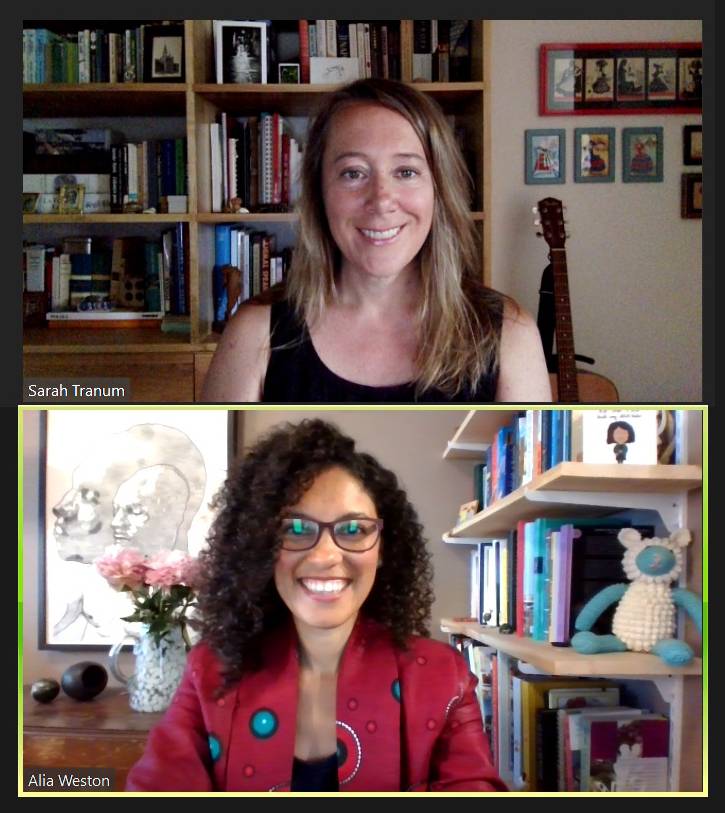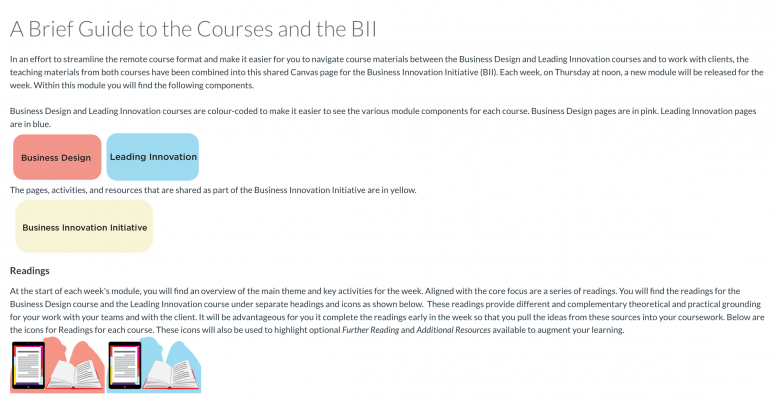OCAD University’s shift towards remote education as a result of COVID-19 is not only helping to sustain teaching and learning in creative and collaborative ways, it’s also empowering students to be pandemic problem-solvers.
An experiential learning opportunity in the Master of Design in Strategic Foresight and Innovation (SFI) program is providing opportunities for students to help local organizations navigate the challenges presented by the coronavirus. SFI courses Business Design and Leading Innovation are two closely intertwined courses that are part of the Business Innovation Initiative (BII), which pairs student teams with local organizations. Through the BII, 22 graduate students are supporting local organizations in responding to pandemic-triggered economic downturn.
“COVID-19 has impacted everyone quite significantly, and that is changing the way people consume products and services, so there is a lot of uncertainty for organizations,” says Dr. Alia Weston, Associate Professor, Creative and Business Enterprise Faculty of Liberal Arts and Sciences & School of Interdisciplinary Studies, who co-teaches the course with Sarah Tranum, Associate Professor, Social Innovation Design, Faculty of Design. “We have supported the students to understand the perspectives and experiences of these organizations and collaborate with them to face these challenges.”
Real-world business consulting projects have long been a component of these cooperative courses, but this new pandemic response aspect makes the learning especially topical. Groups of students have been assigned to work with a business startup or a non-profit, in sectors such as online retail, culture and food and hospitality, to assess the impacts of COVID-19 on their operations, and co-develop with the client, design strategies and tactics for more effectively conducting sales and engaging with customers.
“The focus was on, what is the big fear these organizations are facing, and how do they move past it to see opportunity? How can our students use their training and research to help them stay afloat and thrive and find ways to pivot?” says Tranum.
Tranum and Weston were themselves challenged by the pandemic to pivot quickly into remote, asynchronous teaching. They typically taught their respective courses concurrently, with much overlap and cooperation between the students. To offer a more seamless experience to students already facing hardships during the pandemic, they decided to create one integrated course. With support from IT Services, they developed a single space for the course materials in Canvas, OCAD U’s learning management system. In collaboration with the IT team, a series of wayfinding icons were developed to help the students easily navigate the course site.
“In the context of the pandemic, where it’s easy to feel online fatigue, going back and forth between two different online course sites would have been confusing and cumbersome,” says Tranum. “We created this shared space for all the learning to happen to make things more convenient for students.”
At the same time, Tranum and Weston invested in developing and adding fresh course content from week to week to keep the learning relevant to our fast-changing times. They introduced research articles and examples that could help shed light on the impact of the pandemic-led crisis on business design and innovation. Both faculty members brought their individual and collective research into the courses. Weston pulled in insights from her own research on the role of creativity in addressing business adversity. Tranum brought insights from her work on alternative economies.
“In the course, we are approaching design from a perspective of being iterative, flexible, collaborative, empathetic and relevant to the current social moment,” says Weston. “We asked: How can human-centred design be useful in these precarious times?”

